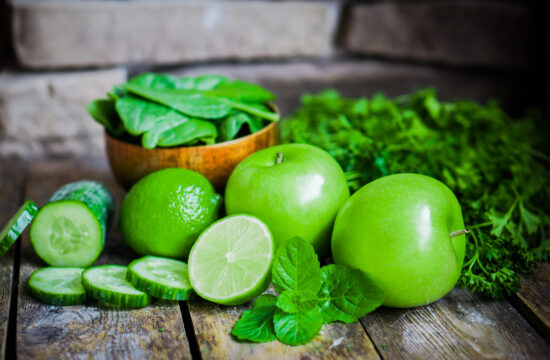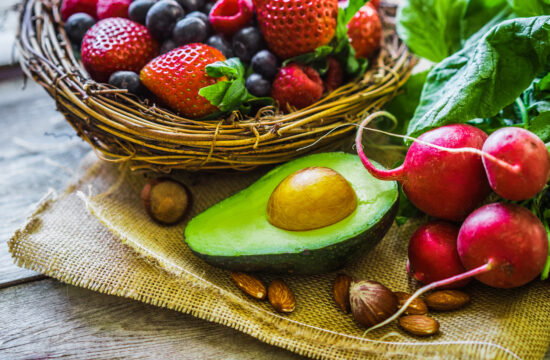Embrace Whole Foods
Understanding Whole Foods
When I first started learning about nutrition, diving into the concept of whole foods was like a light bulb moment for me. Whole foods are basically foods that are as close to their natural state as possible. Think of fruits, vegetables, nuts, seeds, and whole grains. They’re packed with nutrients, and they just feel right for your body. The more I incorporated these into my diet, the more energy I noticed I had.
Making the switch to whole foods doesn’t mean you have to toss everything out of your pantry. It’s more about being mindful of what you’re eating. When I choose snacks, I reach for an apple instead of chips. It’s small changes that, over time, built a solid foundation for my healthier lifestyle.
Need a Strong Nutrition Boost for Your Diet? Take a Look...
Plus, the taste! Have you ever bitten into a fresh, juicy peach in the summer? It’s a game changer. Once you start eating whole foods, you’ll likely start craving them more. It’s all about retraining your taste buds!
Hydrate Creatively
The Importance of Staying Hydrated
Let’s be real: drinking water isn’t always the most exciting thing. I’ve been there too! However, staying hydrated is crucial for overall health. I try to keep a water bottle with me wherever I go. Not only does it help me sip throughout the day, but it also reminds me to drink more.
A tip that worked wonders for me was flavoring my water. I’ve tried adding slices of lemon, berries, and even cucumber! It makes water so much more appealing. Plus, my friends always comment on how fancy I am with my “spa water.”
Also, don’t forget about foods that hydrate! Foods like watermelon and cucumber are high in water content and can contribute to your daily intake. So when snack time rolls around, think about grabbing a piece of fruit instead of something processed.
Need a Strong Nutrition Boost for Your Diet? Take a Look...
Mindful Eating Practices
Learning to Listen to Your Body
Okay, I know how easy it is to multitask while eating—scrolling through my phone, working, you name it. But I’ve learned that practicing mindful eating makes a world of difference. When I started focusing on my meals, I realized how often I was eating out of boredom rather than hunger.
One technique that really worked for me is to sit down at the table (with no distractions) and really enjoy my food. I try to chew slowly and savor every bite. This approach helps me recognize when I’m full. For me, that’s been one of the keys to stopping mindless snacking.
Creating a pleasant atmosphere helps too. Sometimes I light a candle or play soft music during meals. It turns eating into a little ritual, making each meal special, which helps me appreciate the food I’m putting into my body.
Balancing Macros and Mindset
Understanding Macronutrients
Getting the balance of macronutrients—carbohydrates, proteins, and fats—right was something I struggled with initially. After reading up on nutrition, I learned that each macronutrient serves a specific purpose in the body. Now, I try to include a bit of everything in my meals to keep things balanced.
Good HealthY DIETING Solution is Easier Than Most People Think!
Take a Look for Yourself!
To simplify things, I often think of my plate as a colorful palette. Incorporating a variety of foods not only pleases the eyes but also contributes to balanced nutrition. For instance, I love a good stir-fry where I can toss in a bunch of veggies, some lean protein, and a healthy fat like avocado or olive oil.
Moreover, being flexible with these ratios was a game changer for me. Some days I’m more active and need a bit more carbohydrates, while other days, I might focus on protein. Listening to how my body responds helps me find the right balance.
Seasonal Eating
The Benefits of Eating with the Seasons
There’s something magical about eating seasonally. When I first embraced this concept, it opened my eyes to how deeply connected our food is to the earth and the seasons. Not only do seasonal foods taste better, but they’re also often fresher and more nutritious.
Each season has its bounty, and I love exploring local farmers’ markets during these times. I get to discover new fruits and vegetables that I might not have normally tried. Plus, it’s a joy to support local farmers and the community.
Cooking with seasonal items also ignites creativity in the kitchen! For instance, in fall, I go all in on pumpkins and squash. In summer, I can’t get enough of tomatoes and cucumbers. Each season brings new flavors, and that makes meals exciting.
Frequently Asked Questions
1. What are whole foods?
Whole foods are items that are minimally processed and close to their natural state. This includes fruits, vegetables, whole grains, nuts, and legumes. They generally provide more nutrients and benefits compared to processed foods.
2. How can I stay hydrated?
Staying hydrated can be as simple as carrying a water bottle around and adding flavors like fruits and herbs to your water. Eating foods high in water content, such as watermelon and cucumbers, can also help keep you hydrated.
3. What is mindful eating?
Mindful eating involves paying full attention to the experience of eating and drinking, noticing the taste, texture, and smell of your food. It encourages slowing down and savoring your meals, which can help you recognize your body’s hunger and fullness cues better.
4. How do I balance my macronutrients?
Balancing macronutrients means including the right proportion of carbohydrates, proteins, and fats in your meals. A colorful plate with a variety of foods is a great way to achieve this. Listen to your body to see what it needs based on your activity levels.
5. Why eat seasonally?
Eating seasonally means consuming fruits and vegetables that are harvested at the same time you’re eating them. This often leads to better taste, more nutrients, and supports local agriculture, enhancing your connection to the earth.












